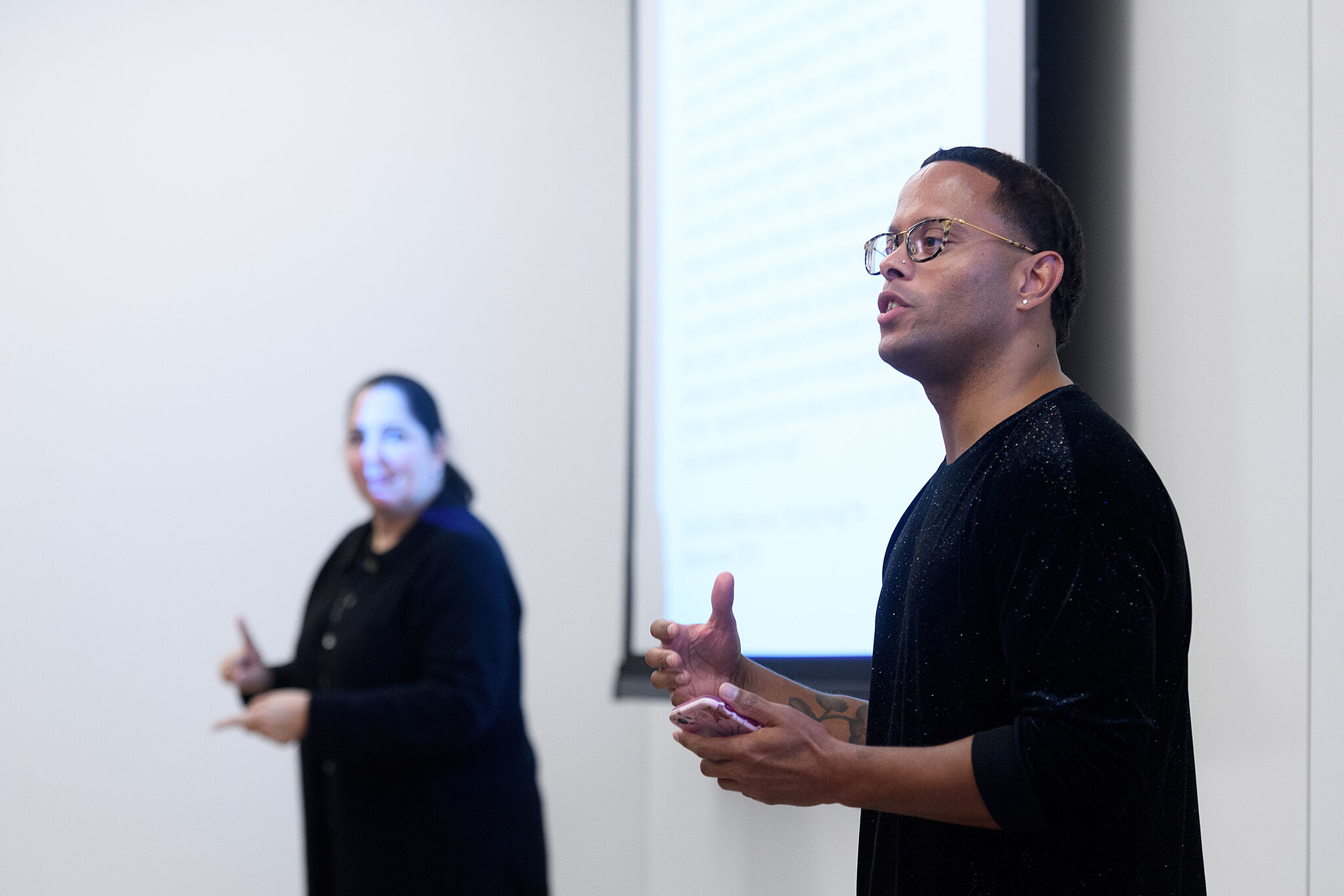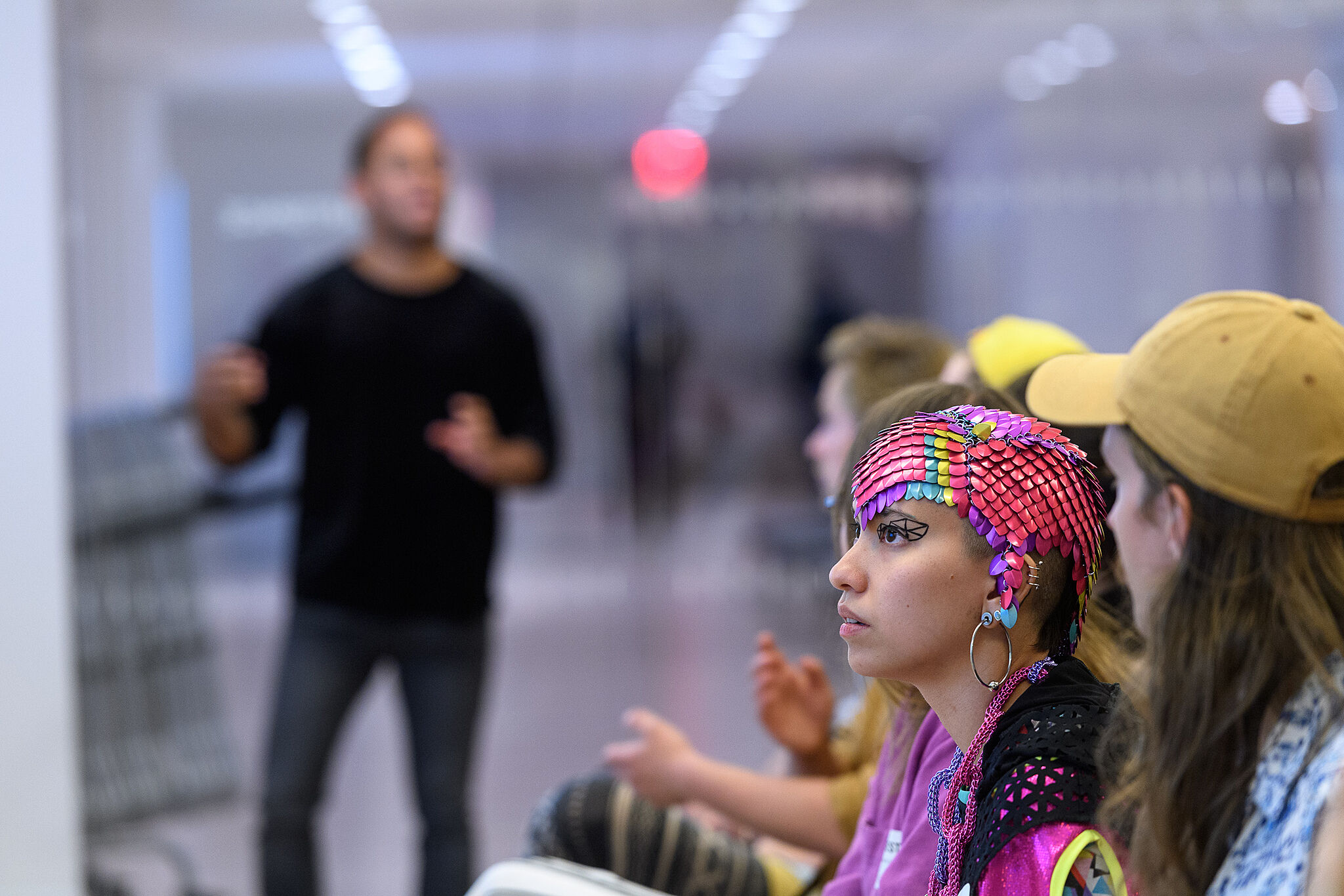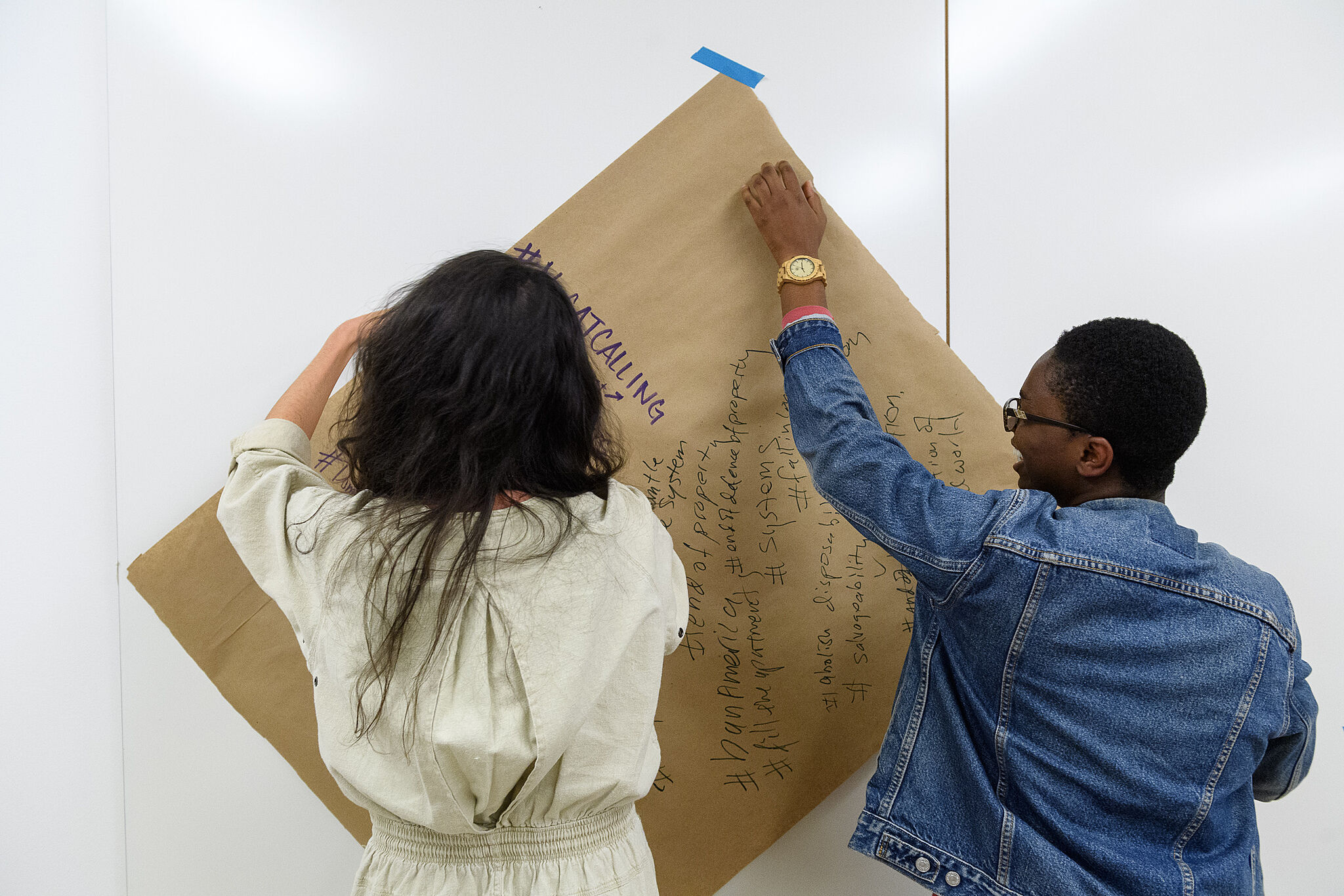Study Sessions: Che Gossett
Feb 6, 2018
On September 8, 2017, writer and archivist Che Gossett led a discussion in response to Suzanne Lacy’s video Learn Where the Meat Comes From (1976), currently on view in An Incomplete History of Protest: Selections from the Whitney’s Collection, 1940–2017. In the video, Lacy enacts a cooking show and takes on a disposition reminiscent of chef, author, and television personality, Julia Child. While preparing a lamb carcass, she recites seasonings, notes appropriate terminology for placing an order with the butcher, suggests side dishes, and encourages the viewer to imitate the movements of a lamb: “Imagine you are a curious animal often turning, lowering, and raising your head. The muscles in your neck will be rich in flavor.” She then enacts the animal, snarling and snorting as she dons fake fangs, mounts the table, and wrestles with the carcass.
With video, Lacy touches on a theory also explored in such realms as gender studies and drag shows―that gender itself is a performance. In transforming into the live version of the dead animal she prepares for eating, she points to ambiguity that exists between subjecthood and objecthood, when one’s gender is essentialized as innately submissive and confined to caring for and tending to others’ needs.
Certain parallels stand out between Lacy’s observations on her experience as a white woman and the colonial histories of people of African descent. In their presentation, Gossett projected a quote by scholar Hortense Spiller that examines the body within the context of being held captive. Spiller writes that black subjecthood in the West begins not with the body, but with “what the body was made to mean via the powerful grammars of capture.” As this quote points out, the systems of the Middle Passage defined black bodies as not belonging to humans, but transactional objects―cargo and property belonging to white owners.
In drawing an analogy between Lacy’s video and observations on black subjecthood, Gossett drew attention to the creation of subject/object ambiguity—what the body is made to mean—as a tool itself; and as a method for maintaining an economic and social order that devalues certain subjecthoods for the advantage of others. Both Lacy and Spiller underscore the circumstances of our bodies within this order that was constructed to categorize them, and, by extension, the people that these bodies belong to. On one level, our bodies are evidence of our self-perceptions, and, in relation to other subjecthoods, are often perceived to be evidence of something else.
Justin Allen, Assistant to Access and Community Programs



